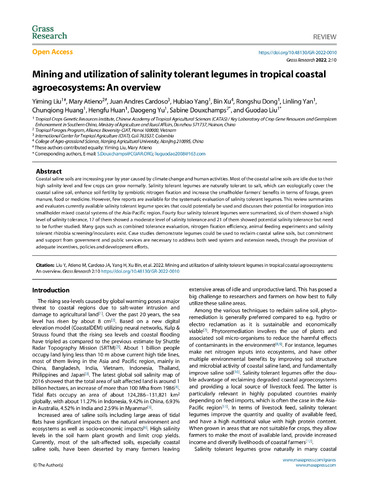Mining and utilization of salinity tolerant legumes in tropical coastal agroecosystems: An overview
Coastal saline soils are increasing year by year caused by climate change and human activities. Most of the coastal saline soils are idle due to their high salinity level and few crops can grow normally. Salinity tolerant legumes are naturally tolerant to salt, which can ecologically cover the coastal saline soil, enhance soil fertility by symbiotic nitrogen fixation and increase the smallholder farmers’ benefits in terms of forage, green manure, food or medicine. However, few reports are available for the systematic evaluation of salinity tolerant legumes. This review summarizes and evaluates currently available salinity tolerant legume species that could potentially be used and discusses their potential for integration into smallholder mixed coastal systems of the Asia-Pacific region. Fourty four salinity tolerant legumes were summarized, six of them showed a high level of salinity tolerance, 17 of them showed a moderate level of salinity tolerance and 21 of them showed potential salinity tolerance but need to be further studied. Many gaps such as combined tolerance evaluation, nitrogen fixation efficiency, animal feeding experiments and salinity tolerant rhizobia screening/inoculants exist. Case studies demonstrate legumes could be used to reclaim coastal saline soils, but commitment and support from government and public services are necessary to address both seed system and extension needs, through the provision of adequate incentives, policies and development efforts.

